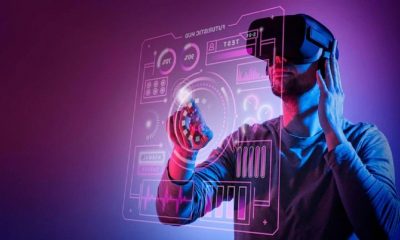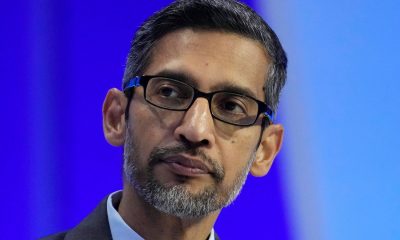

Technology
The global struggle for tech mastery – Crypto News
There is no longer any doubt about the challenge that China, Russia, and other authoritarian regimes pose to international rule of law, respect for sovereignty, democratic principles, and free people. These threats have grown as China and Russia have harnessed new technologies to surveil populations, manipulate information, and control data flows. They are setting an example for how authoritarians can further clamp down on freedom of thought, expression, and association.
Rising geopolitical tensions have coincided with growing encroachments by disruptive technologies into all aspects of public and private life. The implications for 2023 and beyond are clear: the technology platforms of the future are the new terrain of strategic competition. The United States therefore has a core interest in making sure that these technologies are designed, built, fielded, and governed by democracies.
Ukraine’s resistance to Russia’s invasion (with considerable support from other democracies) crystallizes how technology is transforming geopolitics. A highly networked, tech-savvy country quickly came together against a much larger adversary that initially seemed to possess an overwhelming military advantage. Ukraine is now winning the world’s first digitally networked war, because it has harnessed software innovation and maximized the use of open-source technology and decentralized operations. Its tech capabilities are all stitched together by uninterrupted internet access.
Ukraine is also offering a glimpse of what a tech-enabled democracy could look like: cloud-based services allow the government to connect directly with the citizenry, mostly through everyday devices like personal phones with embedded encryption and privacy software. Young, innovative political leaders and policymakers are working closely with a talented tech workforce, sweeping away decades of bureaucratic sclerosis. If Ukraine can innovate under wartime conditions, all other democracies can and should be able to do so as well.
Large and small firms from across the democratic world have aided Ukraine’s tech-first transformation, emerging as important strategic actors in their own right. They protected critical Ukrainian government and financial data early on by shifting it to the cloud; they provided warnings of, and responses to, Russian cyberattacks; and they helped keep Ukrainians connected directly to each other and the global internet, so that the world would know about Russia’s lies, war crimes, and military setbacks. Without this broader ecosystem and access to technology platforms, the conflict might have taken a very different path.
But now imagine a future where authoritarian states control the technologies and firms that oversee network access, protect networks from cyber threats, build key digital infrastructure, determine what messages to censor, and manage flows of sensitive data. It would be a world of systematic political coercion and invasions of individual privacy, where basic protections for freedom of expression had been extinguished. Neither the Ukrainians nor any other democratic polity would control their own destiny.
We should take seriously China’s success in exporting integrated network solutions that bundle hardware, software, and services for customers around the world.
These are extending the Chinese government’s sphere of influence and giving it an advantage over the US and other democracies, not just in the technology race but also in the broader geopolitical contest. One cannot simply assume that Western firms’ advantages in areas like cloud technology, data centers, and social media will naturally endure.
TikTok’s meteoric rise, and the national-security concerns it implies, is a case in point. China’s inroads into fintech, e-commerce, and other platforms – built on networks managed by China-based companies, and run with hardware manufactured in China or under its shadow – offer a preview of just how contested the future will be.
For the world’s democracies, the policy challenges are clear. First, we must abandon our hands-off approach to technological development. The dangerous developments described above came at a time when the US maintained a laissez-faire approach to tech strategy. In core areas of hardware, software, and network development, the US and its partners have had to react from a defensive crouch. That was the case with the US-led campaign against Huawei’s 5G first-mover advantage, the CHIPS Act’s $52.7 billion infusion for US semiconductor production (copied elsewhere in the West), and America’s belated effort to develop a comprehensive national artificial-intelligence strategy. These reactive measures merely forestalled disaster, rather than instilling optimism that we are ready for the future.
Second, the US and its partners should identify the “next chips” and orient public policy accordingly. We need a repeatable public-private model for developing and executing a long-term national technology strategy. The risks of large public investments in specific sectors – both political and economic – pale in comparison to the risks of ceding core techno-industrial functions to a strategic rival, or leaving them acutely vulnerable to supply-chain chokepoints.
The US and its allies are moving in the right direction by encouraging more mining and processing of the minerals that will be critical to building the technologies of the future. But there may be other hardware-manufacturing sectors that warrant greater attention and investment. For example, the West should be very worried about China’s dominance in the battery and solar-panel value chains.
Third, America and its partners must identify the next tech “offsets” and accelerate these technologies’ development and deployment. Attempting to replicate every technology-manufacturing base within the democratic orbit is unrealistic and probably prohibitively expensive. Instead, the US and its allies should coordinate their investments in the technologies that will drive the next wave of economic development. I see biomanufacturing and other advanced manufacturing techniques as exciting areas where the most competitive first movers can leap ahead.
Equally, AI-enabled breakthroughs in fusion energy could represent an entirely new pathway to cleantech, with huge strategic ramifications. Finally, democracies must retain optimism in new technologies’ ability to provide unforeseen opportunities and benefits. I worry that if we lose sight of the promise of AI, biotech, and other emerging technologies – or if we dwell on the challenges and become too risk-averse – we will regulate ourselves out of competitive leadership and into a strategic cul-de- sac. No one denies that powerful technology platforms raise deep ethical, economic, and political challenges, and that these will require systemic – rather than ad hoc – responses. But we must trust in democratic means to find a balance between innovation, regulation, and other national interests in disruptive sectors.
Civil society, governments, and companies across the democratic world are perfectly capable of finding a balanced approach to governing these technologies.
By contrast, authoritarian states have no equivalent governance capacity, nor any checks on how the state might exploit tech platforms in ways that violate human rights, whether to extend its geopolitical reach, or to undermine its foes.
Winning the platform competition will not resolve complicated debates within democratic societies about how to govern technology, but it is a prerequisite for even having a debate in the first place.
The agenda hinted at here will require national leadership and systematic organization. The US and other democracies have faced such challenges before, such as during the mid-twentieth-century space race, which continues to this day.
But we cannot rerun the Cold War playbook for this new era. We must adjust to the rise of new players in technology innovation and funding – from the crowd to venture capital. We must accept that technology supply chains will still crisscross the world, as will the networks of universities, researchers, and companies that are building the future, albeit in shifting patterns, as we adjust to the new realities of strategic competition.
These shifts can be organized and harnessed to ensure that the US and fellow democracies retain their tech leadership. But democracies must heed the lessons of 2022 if the world is going to have a choice about which platforms it will use to build the future. ©Project Syndicate, 2022. www.project-syndicate.org
Eric Schmidt, a former CEO and chair of Google/Alphabet, is Chair of the National Security Commission on Artificial Intelligence
Catch all the Technology News and Updates on Live Mint. Download Mint News App to get Daily market update Live business news,
-

 Blockchain1 week ago
Blockchain1 week agoBitcoin Consolidation Continues: These Are Two Key Support Levels To Watch – Crypto News
-

 Blockchain1 week ago
Blockchain1 week agoBitcoin Consolidation Continues: These Are Two Key Support Levels To Watch – Crypto News
-

 Blockchain1 week ago
Blockchain1 week agoBitcoin Consolidation Continues: These Are Two Key Support Levels To Watch – Crypto News
-

 Blockchain1 week ago
Blockchain1 week agoBitcoin Consolidation Continues: These Are Two Key Support Levels To Watch – Crypto News
-

 Blockchain1 week ago
Blockchain1 week agoBitcoin Consolidation Continues: These Are Two Key Support Levels To Watch – Crypto News
-
others1 week ago
Will Ethereum Price Rally to $3,200 as Wall Street Pivots from BTC to ETH – Crypto News
-
![DIS Elliott Wave technical analysis [Video]](https://dripp.zone/news/wp-content/uploads/2025/06/DIS-Elliott-Wave-technical-analysis-Video-Crypto-News-400x240.jpg)
![DIS Elliott Wave technical analysis [Video]](https://dripp.zone/news/wp-content/uploads/2025/06/DIS-Elliott-Wave-technical-analysis-Video-Crypto-News-80x80.jpg) others5 days ago
others5 days agoSkies are clearing for Delta as stock soars 13% on earnings beat – Crypto News
-
![DIS Elliott Wave technical analysis [Video]](https://dripp.zone/news/wp-content/uploads/2025/06/DIS-Elliott-Wave-technical-analysis-Video-Crypto-News-400x240.jpg)
![DIS Elliott Wave technical analysis [Video]](https://dripp.zone/news/wp-content/uploads/2025/06/DIS-Elliott-Wave-technical-analysis-Video-Crypto-News-80x80.jpg) others5 days ago
others5 days agoSkies are clearing for Delta as stock soars 13% on earnings beat – Crypto News
-
Cryptocurrency1 week ago
TON Foundation Confirms UAE Golden Visa Offer Is Not Official – Crypto News
-

 Cryptocurrency1 week ago
Cryptocurrency1 week agoBinance stacks Ethereum at yearly high, U.S. funds buy more: So why isn’t ETH moving? – Crypto News
-

 others1 week ago
others1 week agoCompany Owned by Billionaire Gold Miner May Be Seized by Russian Government for Allegedly Breaching Regulations: Report – Crypto News
-

 Blockchain6 days ago
Blockchain6 days agoInsomnia Labs Debuts Stablecoin Credit Platform for Creators – Crypto News
-

 De-fi1 week ago
De-fi1 week agoWorld Liberty Finance Opens Vote to List $WLFI Token – Crypto News
-

 others1 week ago
others1 week agoUS Dollar Witnesses Worst First-Half Performance in 52 Years As Money Supply Explodes To $21,942,000,000,000 – Crypto News
-

 Technology1 week ago
Technology1 week agoWe’re Losing the Plot on AI in Universities – Crypto News
-

 others1 week ago
others1 week agoAppropriate to have cautious gradual stance on easing – Crypto News
-
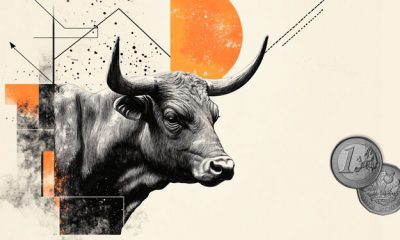
 others6 days ago
others6 days agoEUR/GBP posts modest gain above 0.8600 ahead of German inflation data – Crypto News
-

 Blockchain6 days ago
Blockchain6 days agoAnt Group Eyes USDC Integration Circle’s: Report – Crypto News
-

 Cryptocurrency5 days ago
Cryptocurrency5 days agoBitcoin Breaks New Record at $111K, What’s Fueling the $120K Price Target? – Crypto News
-
Technology5 days ago
XRP Eyes $3 Breakout Amid Rising BlackRock ETF Speculation – Crypto News
-

 Blockchain1 week ago
Blockchain1 week agoBitcoin Consolidation Continues: These Are Two Key Support Levels To Watch – Crypto News
-

 Metaverse1 week ago
Metaverse1 week agoAre firms wasting their money on AI agents? – Crypto News
-

 Metaverse1 week ago
Metaverse1 week agoAre firms wasting their money on AI agents? – Crypto News
-

 Cryptocurrency1 week ago
Cryptocurrency1 week agoInstitutions Pile Up BTC But Price Doesn’t go up, Why? – Crypto News
-

 others1 week ago
others1 week agoBank Insider Admits to Nearly Decade-Long Scheme of Falsifying Loan Applications To Steal Funds: DOJ – Crypto News
-

 Cryptocurrency1 week ago
Cryptocurrency1 week agoThis Week in Crypto Games: Planetside Dev’s ‘Reaper Actual’, What’s Next for ‘MapleStory Universe’ – Crypto News
-
Business1 week ago
Toncoin Price Drops 10% As UAE Authorities Call TON Golden Visa Offer Unofficial – Crypto News
-
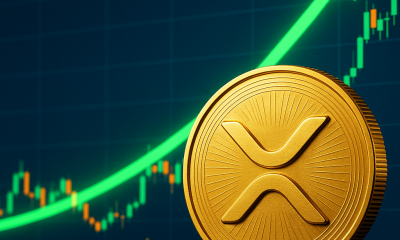
 Blockchain1 week ago
Blockchain1 week agoXRP Set To Shock The Crypto Market With 30% Share: Analyst – Crypto News
-

 Cryptocurrency1 week ago
Cryptocurrency1 week agoCoinbase hacker returns with $12.5 mln ETH buy: Will security concerns affect Ethereum? – Crypto News
-
others1 week ago
Is a Pi Network Crash Ahead As 272M Coins Unlock in July – Crypto News
-
Business1 week ago
Solana ETF Launch Delayed Amid Wait for SEC’s Crypto ETF Framework – Crypto News
-

 Cryptocurrency1 week ago
Cryptocurrency1 week agoOn thinking ahead when markets get murky – Crypto News
-
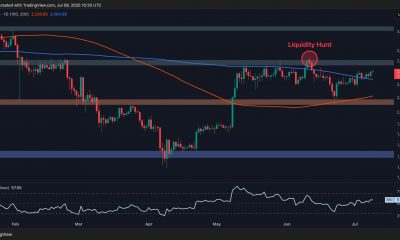
 Cryptocurrency7 days ago
Cryptocurrency7 days agoIs ETH Finally Ready to Shoot For $3K? (Ethereum Price Analysis) – Crypto News
-
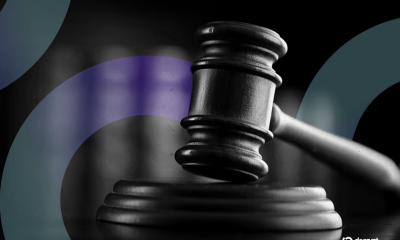
 Cryptocurrency7 days ago
Cryptocurrency7 days agoTornado Cash Judge Won’t Let One Case Be Mentioned in Roman Storm’s Trial: Here’s Why – Crypto News
-

 Blockchain7 days ago
Blockchain7 days agoXRP Rally Possible If Senate Web3 Crypto Summit Goes Well – Crypto News
-

 others7 days ago
others7 days agoUSD/CAD trades with positive bias below 1.3700; looks to FOMC minutes for fresh impetus – Crypto News
-

 Blockchain6 days ago
Blockchain6 days agoEthereum Bulls Roar — $3K Beckons After 5% Spike – Crypto News
-

 Blockchain6 days ago
Blockchain6 days agoKraken and Backed Expand Tokenized Equities to BNB Chain – Crypto News
-

 others6 days ago
others6 days agoNovaEx Launches with a Security-First Crypto Trading Platform Offering Deep Liquidity and Institutional-Grade Infrastructure – Crypto News
-

 Cryptocurrency6 days ago
Cryptocurrency6 days agoXRP price forecast as coins surges 2.19% to $2.33 – Crypto News
-

 others5 days ago
others5 days agoAnthony Scaramucci Says $180,000 Bitcoin Price Explosion Possible As BTC ‘Supremacy’ Creeps Up – Here’s His Timeline – Crypto News
-

 Blockchain5 days ago
Blockchain5 days agoSUI Chart Pattern Confirmation Sets $3.89 Price Target – Crypto News
-

 others5 days ago
others5 days agoEUR/GBP climbs as weak UK data fuels BoE rate cut speculation – Crypto News
-
Business4 days ago
PENGU Rallies Over 20% Amid Coinbase’s Pudgy Penguins PFP Frenzy – Crypto News
-
Technology1 week ago
Why Are Dormant Bitcoin Whale Wallets Suddenly Waking Up? – Crypto News
-
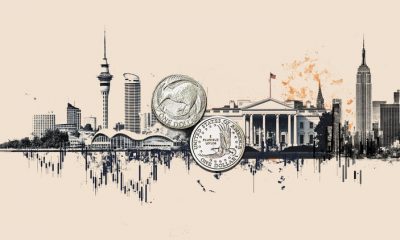
 others1 week ago
others1 week agoNZD/USD risks further downside as Kiwi tests critical support at 0.6050 – Crypto News
-

 Blockchain1 week ago
Blockchain1 week agoCardano (ADA) Turns Upward — Signs of a Recovery Emerge – Crypto News
-

 Cryptocurrency1 week ago
Cryptocurrency1 week agoMacroeconomics, Market Shifts, and Trading Speed Take Center Stage at B2MEET by B2PRIME – Crypto News
-

 Blockchain1 week ago
Blockchain1 week agoUAE Golden Visa Is ‘Being Developed Independently‘ — TON Foundation – Crypto News
-
others1 week ago
Nasdaq-Listed Bit Digital Converts Entire Bitcoin Holdings To Ethereum Treasury – Crypto News

